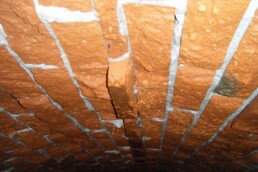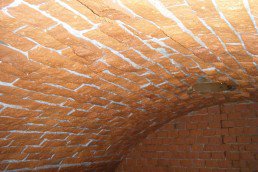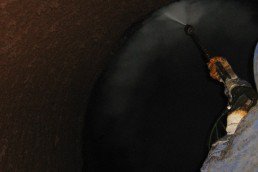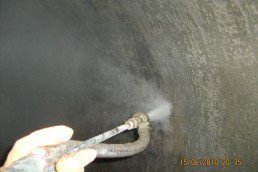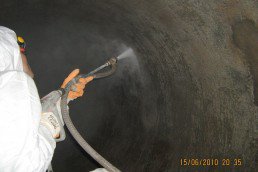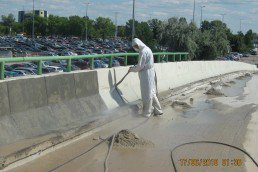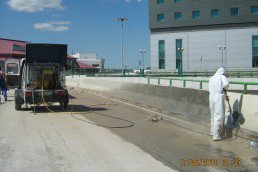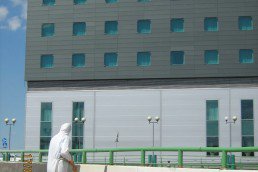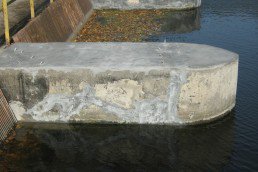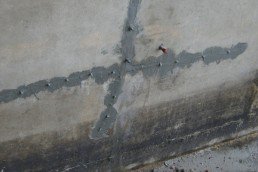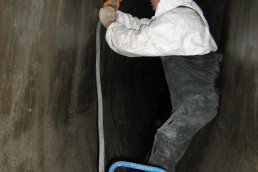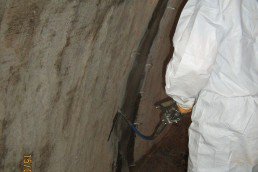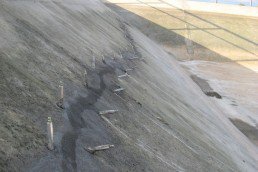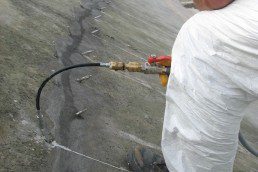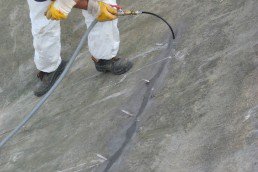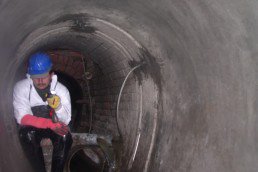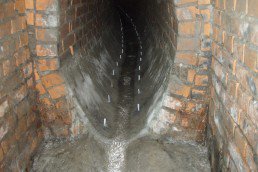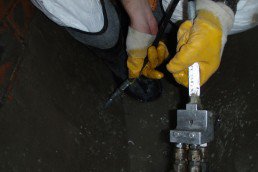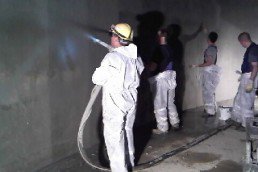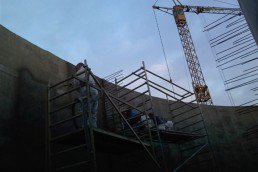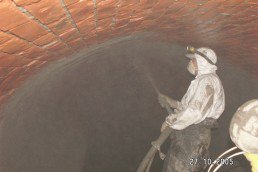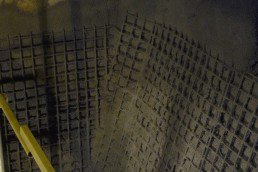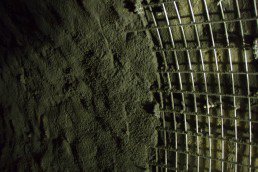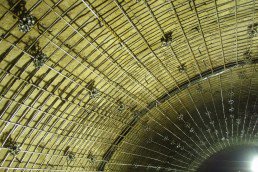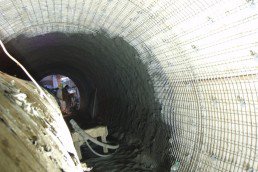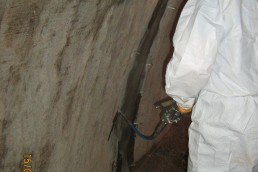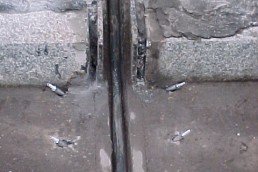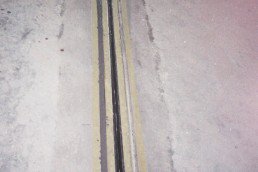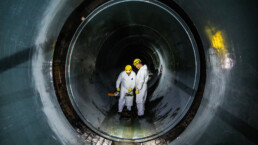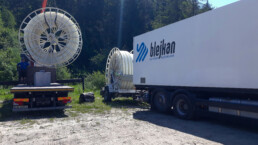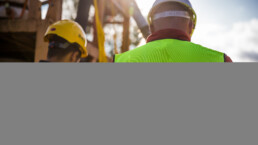CLEANING: HYDROKINETIC AND ABRASIVE BLASTING, WATER BLASTING AND WATER SANDBLASTING
The cleaning process can be applied to concrete, brick, and steel structures. The purpose of the process is to dislodge any weak or corroded elements of the structure and to properly prepare the surface for further renovation, i.e. reprofiling the structure, applying waterproof coating, or strengthening the structure with shotcrete and reinforcement. Depending on the type of cleaned surface, its designated use, and place where the work is performed, different types of cleaning processes are used with different pressures. Unpainted concrete and brick structures without bituminous coatings are cleaned only with water at pressures ranging from 400 to 2000 bars (5,800 to 29,000 PSI). If the structure was earlier protected with waterproofing coating mentioned above it may be required to use wet sandblasting at a pressure of up to 1000 bars (14,500 PSI). Painted and unpainted steel structures are sandblasted. BLEJKAN uses Putzmeister equipment: Dynajet 500, Dynajet 800th and Dynajet 170 UHP.
SPOT REPROFILING OF STRUCTURES AND RUSTPROOFING OF UNCOVERED REINFORCEMENT
This type of work is required when the damage to the structure is beyond merely surface corrosion or leakage. Repairs of this type apply to these parts of the structure which suffered damage caused by an impact, poorly performed vibration of reinforced concrete and later detachment of a fragment. Quite frequently one can notice that large slabs of the structure come off at the point where they touch the reinforcement. As a result the structure loses a layer of cover which causes the deterioration of reinforcement and later necessity to repair or replace it. Applied technologies: Nafufill, Mc-Torkret, EuroCret®20,40,80 product group.
Low pressure injection
In accordance with PN-EN 752-5; 13689; 13566-1.
Low-pressure injection is made usually with mineral materials at a pressure of 50 bars (725 PSI). Key tasks involve soil stabilization behind the structure, filling voids in structures and soil, sealing, and strengthening. If a structure is cracked mineral material injection is used if the crack is over 0.5 mm. Technologies used: Centricrete UF MV and FB, EuroGrount Inject.
High pressure injection
In accordance with PN-EN 752-5; 13689; 13566-1.
These types of works involve the use of acrylic gels, polyurethane or epoxy resins. The type of material depends on the type of damage to the structure. The pressure of injecting the material ranges from 100 to 250 bars (1450-3625 PSI). The key purpose of the injection is to seal wet or dry gaps and cracks, bind a cracked structure, fill and seal expansion joints with flexible material, stabilize soil, create a structure’s vertical and horizontal insulation. In the case of small cracks high-pressure injection is an excellent repair measure if the crack is under 0.5 mm. Technologies used: MC-Inject 2033, MC-Inject 2300NV, MC-Dur 1264FF and KF, MC-Inject GL-95, IPA-Pur, SwizSeal wet.
THIN-FILM PROTECTIVE COATINGS
This type of coating is wet applied by hand or wet spray. The applied layer of material forms rustproof and waterproof protection. Usually it is applied at the final stage of the rehabilitation procedure. This technology does not strengthen the structure at all. Thin-film mineral coating can be divided into three groups of materials: slurry – applied by brush or long float, layer thickness up to 3 mm; putty applied manually by long float or spray, layer thickness up to 5 mm; and PCC and SPCC mortars applied by hand or spray, layer thickness up to 30 mm. Technology: Zentrifix FM, FS, FF02, Nafufill KM 130 and 180, MC-Rim, MC-Rim F, Ombran Elastikschlamme, Ombran ASP, Ombran FT.
STRENGTHENING COATINGS – SHOTCRETING
This type of concrete and brick structure strengthening procedures are performed by dry spraying, less often by wet spraying. The coatings can be reinforced or without reinforcement, depending on the type of structure and its purpose. Layer thickness ranges from 40 to 100 mm. The application takes at least two stages – spraying up to the reinforcement, and over the reinforcement. The advantage of this type of strengthening is that it is easy to apply in hard to reach places and on irregular shapes. Technology: MC-Torkret, EuroCret® SSM 04HS, 04 and 08, Minotor D.
Selected projects
Renovating one of Warsaw’s most important collector
We are renovating one of Warsaw's most important…
24 January 2020
Trenchless renovation of the sewage network
We are slowly approaching the end of the trenchless…
24 January 2020
Trenchless renovation of the sewage network in 20 streets in 9 districts of Warsaw
We are implementing an investment involving the trenchless…
24 January 2020
